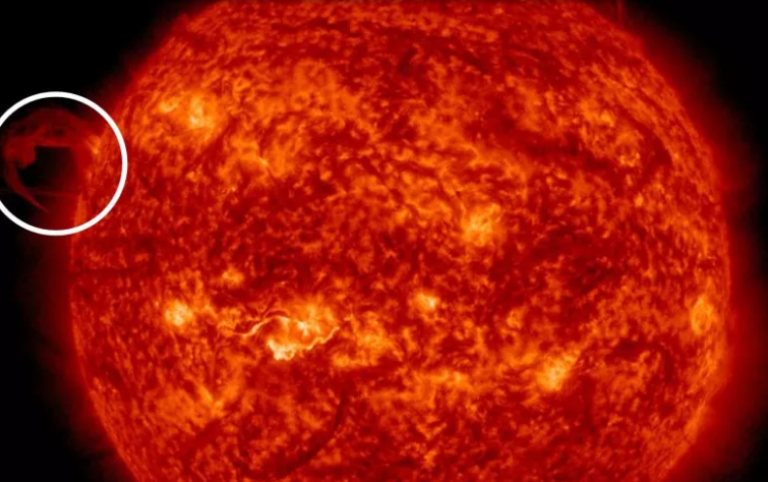Worldsfeed News Desk: A solar eruption on Sunday sent a magnetic filament hurtling toward Earth, carrying a coronal mass ejection (CME) set to collide with our planet at approximately 1 p.m. ET today, as predicted by NASA and NOAA models. The impending CME collision could generate geomagnetic storms reaching G2 or even G3 intensity, potentially causing disruptions to GPS signals, satellite operations, and the appearance of auroras further south than usual.
Incoming Solar Storm Expected to Disrupt GPS and Radio Signals Today
"A looming solar storm, driven by a coronal mass ejection, threatens GPS disruptions and heightened auroras as it barrels towards Earth. NOAA predicts potential geomagnetic storms, emphasizing the impact on satellites, radio waves, and the Earth's magnetic field."

NASA image of the sun spitting out a CME on Sunday, circled in white. The CME is due to hit Earth on Monday, triggering a geomagnetic storm.
NASA SOLAR DYNAMICS OBSERVATORY/SDO

0 Comments